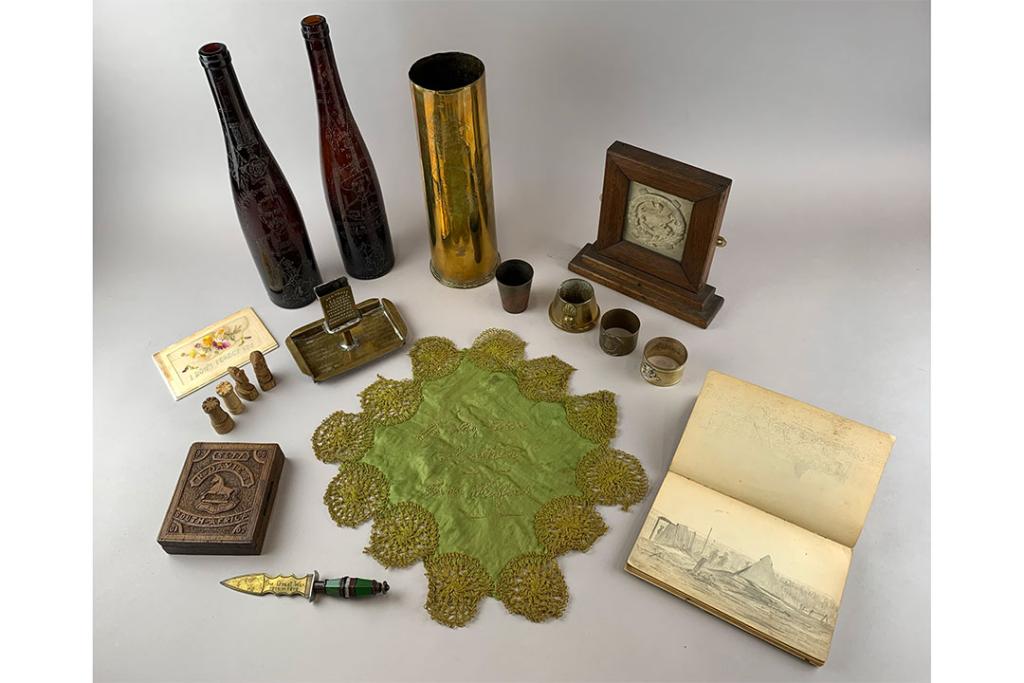
Trench art
Objects made by soldiers and civilians from the debris and by-products of warfare, from the King’s Regiment and Urban History collections at the Museum of Liverpool.
"...the evocative but misleading name applied to the dazzling array of objects made by soldiers, prisoners of war and civilians from the waste of industrialised war, and a host of miscellaneous materials... While trench art as a generic term is well known, such as 'Soldier Art', and on occasion may be subdivided into loose categories described as kinds of 'Folk Art', 'Refugee Art', 'Prisoner of War Art', or 'War Trophies'..."
Trench Art: Materialities and Memories of War, Nicholas Saunders (2003)
The collective term ‘trench art’ tends to describe arts and crafts from materials available in the trenches of the First World War. However, these items made by soldiers and civilians from the debris and by-products of warfare go back centuries, and continue in conflicts from the present day.
One of the earliest and best-documented examples of trench art is the ‘Serpent column’, Istanbul. The column used to be in the centre of the Hippodrome in what was Constantinople. It is made from recast bronze armour captured by the Greeks at the Battle of Plataea in 479 BC.
The types are varied and include practical utensils for eating, blankets, games boards, watercolours, decorative ornaments, souvenirs and religious items. Many of these arts and crafts were made by soldiers to send back home to loved ones as souvenirs. Prisoners of War created them to while away the hours. Injured soldiers even used them as part of their rehabilitation.
What is trench art?
- Art made in trenches by soldiers
- Prisoner of War objects
- Rehabilitation, convalescence and recovery projects
- Art made in workshops or by local craftspeople
- Objects made during downtime
All symbolise experiences of war.
Why make trench art?
- Boredom?
- Evidence?
- Therapy?
- Faith?
- Teamwork?
- Friendship?
Soldiers and civilians around the world continue to create examples of trench art to meet present day tourist demands and export trades.
For more information about this topic visit the Imperial War Museums website.
